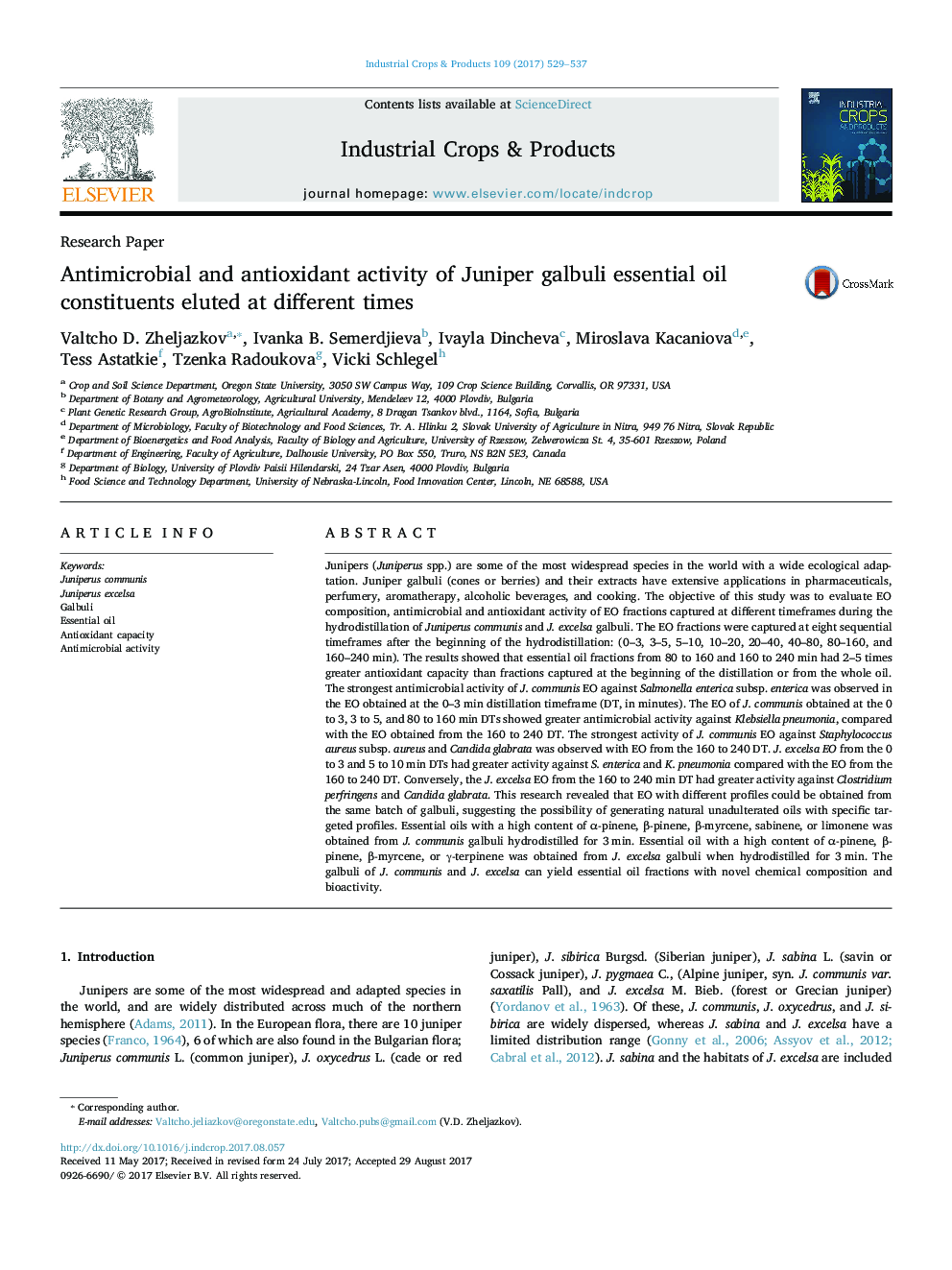| Article ID | Journal | Published Year | Pages | File Type |
|---|---|---|---|---|
| 5761675 | Industrial Crops and Products | 2017 | 9 Pages |
Abstract
Junipers (Juniperus spp.) are some of the most widespread species in the world with a wide ecological adaptation. Juniper galbuli (cones or berries) and their extracts have extensive applications in pharmaceuticals, perfumery, aromatherapy, alcoholic beverages, and cooking. The objective of this study was to evaluate EO composition, antimicrobial and antioxidant activity of EO fractions captured at different timeframes during the hydrodistillation of Juniperus communis and J. excelsa galbuli. The EO fractions were captured at eight sequential timeframes after the beginning of the hydrodistillation: (0-3, 3-5, 5-10, 10-20, 20-40, 40-80, 80-160, and 160-240 min). The results showed that essential oil fractions from 80 to 160 and 160 to 240 min had 2-5 times greater antioxidant capacity than fractions captured at the beginning of the distillation or from the whole oil. The strongest antimicrobial activity of J. communis EO against Salmonella enterica subsp. enterica was observed in the EO obtained at the 0-3 min distillation timeframe (DT, in minutes). The EO of J. communis obtained at the 0 to 3, 3 to 5, and 80 to 160 min DTs showed greater antimicrobial activity against Klebsiella pneumonia, compared with the EO obtained from the 160 to 240 DT. The strongest activity of J. communis EO against Staphylococcus aureus subsp. aureus and Candida glabrata was observed with EO from the 160 to 240 DT. J. excelsa EO from the 0 to 3 and 5 to 10 min DTs had greater activity against S. enterica and K. pneumonia compared with the EO from the 160 to 240 DT. Conversely, the J. excelsa EO from the 160 to 240 min DT had greater activity against Clostridium perfringens and Candida glabrata. This research revealed that EO with different profiles could be obtained from the same batch of galbuli, suggesting the possibility of generating natural unadulterated oils with specific targeted profiles. Essential oils with a high content of α-pinene, β-pinene, β-myrcene, sabinene, or limonene was obtained from J. communis galbuli hydrodistilled for 3 min. Essential oil with a high content of α-pinene, β-pinene, β-myrcene, or γ-terpinene was obtained from J. excelsa galbuli when hydrodistilled for 3 min. The galbuli of J. communis and J. excelsa can yield essential oil fractions with novel chemical composition and bioactivity.
Related Topics
Life Sciences
Agricultural and Biological Sciences
Agronomy and Crop Science
Authors
Valtcho D. Zheljazkov, Ivanka B. Semerdjieva, Ivayla Dincheva, Miroslava Kacaniova, Tess Astatkie, Tzenka Radoukova, Vicki Schlegel,
